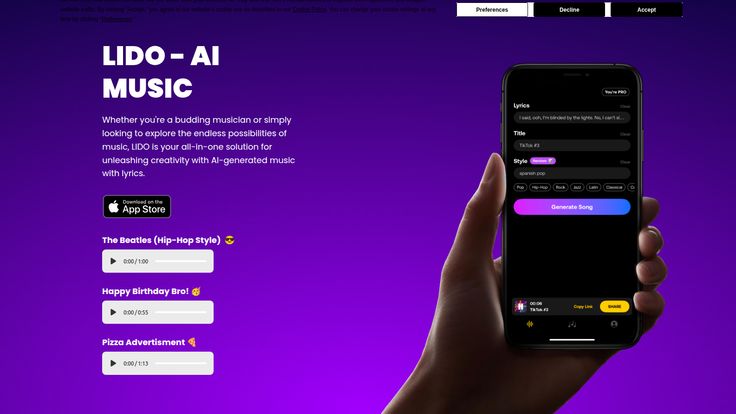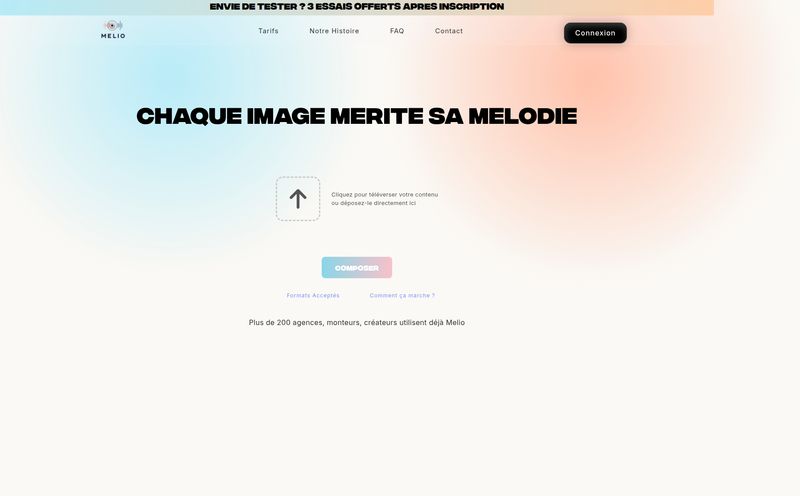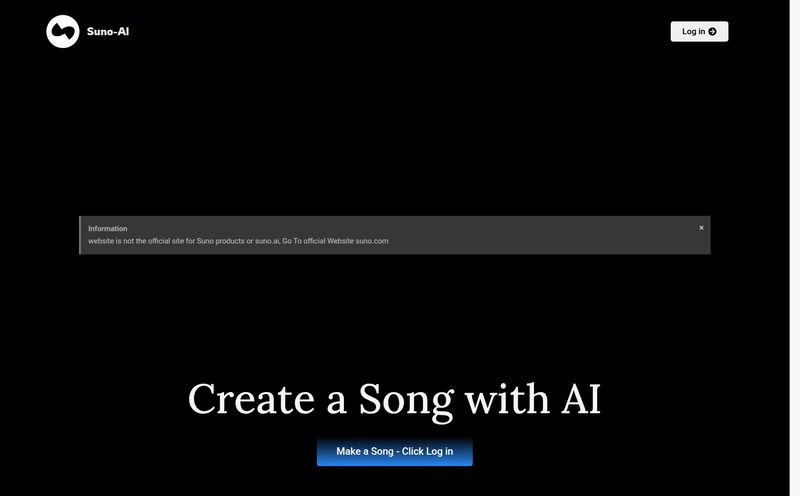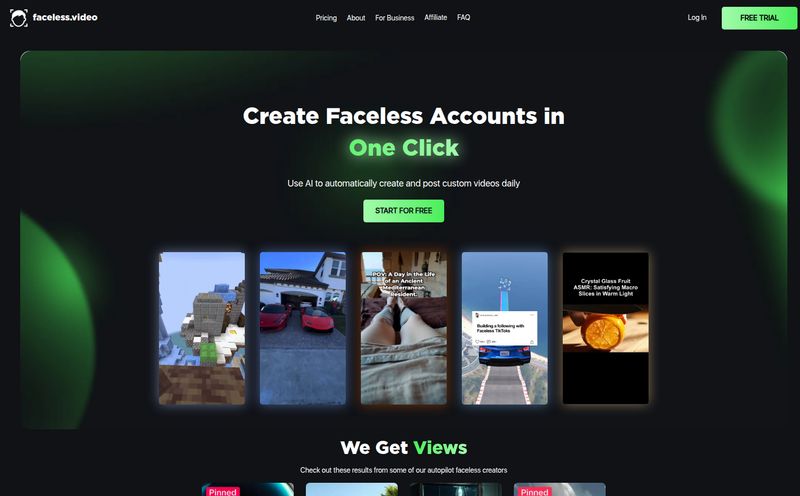Every creator knows the fear. You spend hours editing the perfect video, find a track that just fits, post it, and BAM. Copyright claim. Demonetized. Or worse, a takedown notice. I’ve been there. I once had a whole YouTube video flagged over 10 seconds of a barely-audible background track. It's infuriating. We've all spent way too long scrolling through those soulless, corporate-sounding stock music libraries, trying to find something with a bit of personality. It's a grind.
So when a new tool pops up promising to solve this exact problem, my ears perk up. Enter LIDO AI Music. The pitch is simple: give it lyrics, pick a style, and it spits out a custom song. For you. Royalty-free. It sounds almost too good to be true, right? Let's get into it.
What Exactly is LIDO AI Music?
At its core, LIDO is an AI music generator that lives on your phone (it's an App Store download). Think of it less like a complex Digital Audio Workstation (DAW) like Logic Pro or Ableton, and more like a musical vending machine. You put in your "order"—your lyrics and a style preference—and it delivers a ready-to-use song.
The whole idea is to take the friction out of creating background music for content. Whether you're making TikToks, Instagram Reels, YouTube Shorts, or even a quick ad for your local business, LIDO wants to be your on-demand songwriter. No music theory degree required. It’s designed for speed and convenience, which, let's be honest, is what most of us need in the fast-paced world of content creation.

Visit LIDO
Getting Your Hands Dirty with LIDO: The User Experience
The interface, from what I've seen, is dead simple. That's a huge plus in my book. I don’t have time to learn a whole new complicated software every six months. It looks like a three-step process:
- Write Your Lyrics: This is where the magic starts. You can type in anything. A jingle for your pizza shop, a happy birthday message for your friend, or even just some nonsense words to match a vibe. The example on their site, "I said, ooh, I'm blinded by the lights. No, I can't sl..." feels very much like a nod to a certain pop superstar, which is a fun touch.
- Pick Your Style: This is the fun part. The screenshot shows options like Spanish Pop, Pop, Hip-Hop, Rock, Jazz, Latin, and Classical. That's a decent range. I'm immediately imagining creating a classical version of a rap song or a hip-hop beat for a pizza advertisment (their spelling, not mine, but I kinda like it).
- Generate Song: You hit the button and let the AI do its thing.
That's it. You're not tweaking individual notes or mixing audio tracks. You're a director, not the orchestra. You provide the creative brief, and the AI executes. For the target audience—busy creators, not professional musicians—this is exactly the right approach.
The Big Question: Is The Music Actually Any Good?
This is always the million-dollar question with AI generation, isn't it? Whether it's text, images, or music, the output quality can be... variable. LIDO is no different.
The Upside: Your Personal, Royalty-Free Jingle Factory
The biggest, most undeniable advantage here is the royalty-free license. I cannot stress how huge this is. For anyone who has ever battled the YouTube Content ID system or hesitated to use a trending sound on TikTok for fear of it being removed, this is freedom. Creating a piece of music that is yours to use without worrying about future legal headaches is, frankly, a superpower for a content creator.
And the customization is the other half of the puzzle. Stock music sites have "happy upbeat corporate" tracks. LIDO lets you make a "happy upbeat song about my dog learning to skateboard." It’s a level of specificity that was previously only available if you hired a composer. Now, you can get a unique track tailored to your video in minutes. It's a wild time to be a creator.
A Reality Check: Managing Expectations
Now for the dose of reality. You're not going to generate the next Grammy-winning hit with this. The quality is entirely dependent on the AI's training and capabilities. Sometimes, it might produce something that sounds a bit generic or uncanny. The vocals might have weird artifacts, or the melody might be a little… predictable.
This is the trade-off. You're sacrificing granular creative control for speed and convenience. You can't tell the AI, "make the snare drum punchier in the second verse" or "add a guitar solo here." You get what you get, and if you don't like it, you roll the dice and generate again. It’s a bit of a creative slot machine, and you have to be okay with that.
Who is LIDO AI Actually For?
After looking at what LIDO does, I have a pretty clear picture of its ideal user.
This tool is a dream for:
- Social Media Managers: Juggling multiple accounts and need to churn out daily content? LIDO can provide an endless stream of unique background tracks.
- Solo Content Creators: If you're a one-person show on YouTube or Instagram, your time is your most valuable asset. LIDO saves you from the music-hunting-and-licensing black hole.
- Small Businesses: Want a catchy jingle for a quick social media ad? You can whip one up in five minutes without blowing your marketing budget.
- Podcasters & Streamers: Need some custom intro, outro, or transition music? Perfect use case.
Who is it not for? Professional musicians. If you're looking to compose, produce, and release an album on Spotify, this isn't your tool. It’s an aid for content that uses music, not a tool for creating music as the content. And that’s an important distinction to make. It’s not trying to replace artists; it’s trying to help creators.
The All-Important Pricing Question
So, how much does this magical song-generating vending machine cost? Well, that's where things get a bit mysterious.
I did my due diligence and tried to find a pricing page, but the link seems to be broken—it just leads to a "Page Not Found" error. This isn't uncommon for new tools still figuring things out. Since LIDO is distributed through the App Store, we can make some educated guesses. It's likely one of a few models:
- Freemium: A certain number of free song generations per day/week, with a Pro subscription to unlock more.
- Subscription-based: A flat monthly or yearly fee for unlimited access.
- Pay-per-credit: You buy a pack of credits, and each song generation costs a certain number of credits.
For now, the best way to find out is to download the app and see for yourself. I'll be keeping an eye on this and will update this article as soon as I get a clear answer on the pricing structure. Transparency about costs is pretty important, so I hope they get that page fixed soon.
A Final Thought on the AI Music Revolution
Tools like LIDO, Suno, and others are popping up all over the place, and it signals a real shift in how we think about creative assets. For years, high-quality, custom music was a luxury. It was expensive and time-consuming to procure. Now, the barrier to entry is collapsing.
Is it perfect? No. Will it put composers out of business? I highly doubt it. There will always be a need for human artistry and emotion in music. But for the specific niche of "fast, custom, royalty-free music for online content," AI is not just knocking on the door; it's kicking it down. It’s giving small creators access to tools that were previously only available to big studios.
And for me, as someone who loves seeing the creator economy grow, that’s incredibly exciting. It's just another reminder that it's a wild time to be a creator.
LIDO AI Frequently Asked Questions
Is the music from LIDO really royalty-free?
Yes, that's one of its main selling points. The music generated is intended for you to use in your content on platforms like TikTok, Instagram, and YouTube without fear of copyright claims or takedown notices.
Can I use LIDO music for my monetized YouTube channel?
Based on their claim of providing royalty-free music, you should be able to. This is a massive benefit for YouTubers who rely on ad revenue and want to avoid the dreaded Content ID system. As always, it's good practice to double-check the app's specific terms of service.
Do I need any musical knowledge to use LIDO?
Absolutely not. The platform is designed for non-musicians. If you can write a few lines of text and pick a genre from a list, you have all the skills you need to create a song with LIDO.
How much does LIDO cost?
As of this writing, their official pricing information isn't available on their website due to a broken link. Since it's an App Store application, it likely operates on a freemium, subscription, or credit-based model. Your best bet is to download the app to see the current pricing structure.
What kind of music styles can LIDO create?
LIDO offers a variety of styles to choose from, including Pop, Hip-Hop, Rock, Jazz, Latin, Classical, and Spanish Pop, among others. This allows you to match the music's mood to your specific content.
How does LIDO compare to other AI music tools?
LIDO's focus seems to be on simplicity and lyric-to-song generation for short-form content, making it very accessible. Other tools might offer more complex controls for instrumentation and structure but may have a steeper learning curve. LIDO is built for speed and ease of use for content creators.
Conclusion
So, what's the final verdict on LIDO AI Music? It strikes me as a genuinely useful tool for a very specific, and very large, group of people. If you're a content creator tired of the music licensing rat race, LIDO offers a compelling escape route. It's fast, it's simple, and it hands you the keys to a custom-built, royalty-free music library.
Sure, you're trading deep creative control for that convenience, and the results might require a few tries to get just right. But the ability to generate a unique song that perfectly matches your video's theme in minutes is a powerful thing. It won't write your next symphony, but it just might write the perfect jingle for your next viral video. And sometimes, that's exactly what you need.
Reference and Sources
- LIDO AI Music Official Website: https://www.lido-ai.com/



